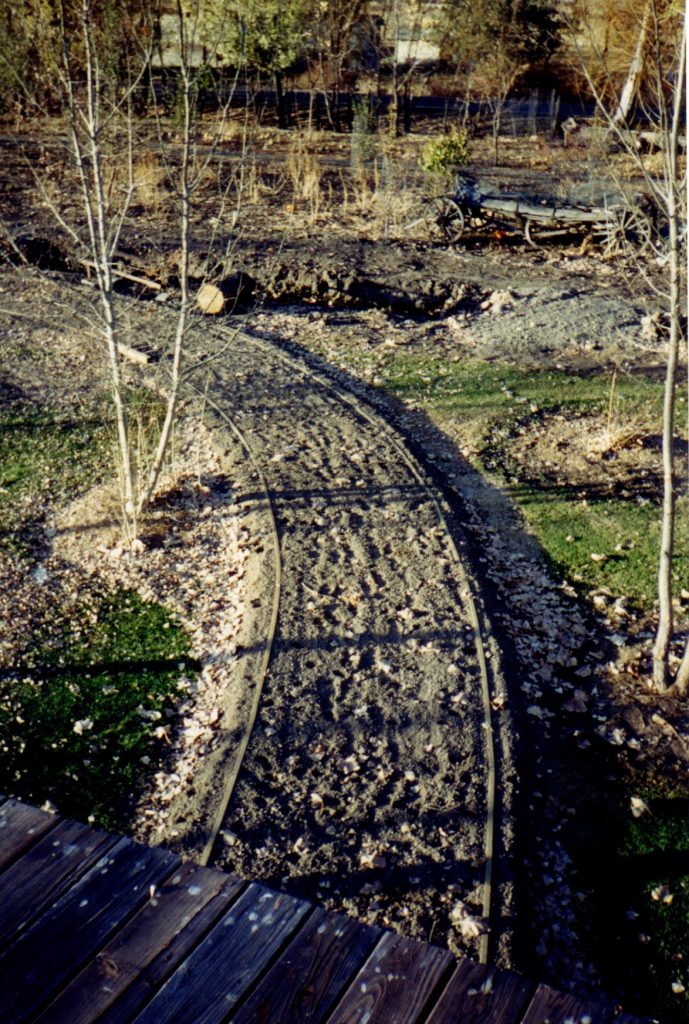TRACK CONSTRUCTION 1999
The installation of the one mile of railroad track in our gardens started in earnest in June of 1999. The project was much bigger than Stephen ever imagined. He had no idea that it would take five long summers to complete the track. During the winter Stephen was a teacher, and during the summers he pounded spikes. He would start on the roadbed as soon as school was out in June, and put the tools away when school started in the fall.
Stephen made the decision that his first priority would be to build the section of track from the barn to the house. This 300′ section would provide a location to park the train outside the barn tunnel so he could finish the rail in the barn.
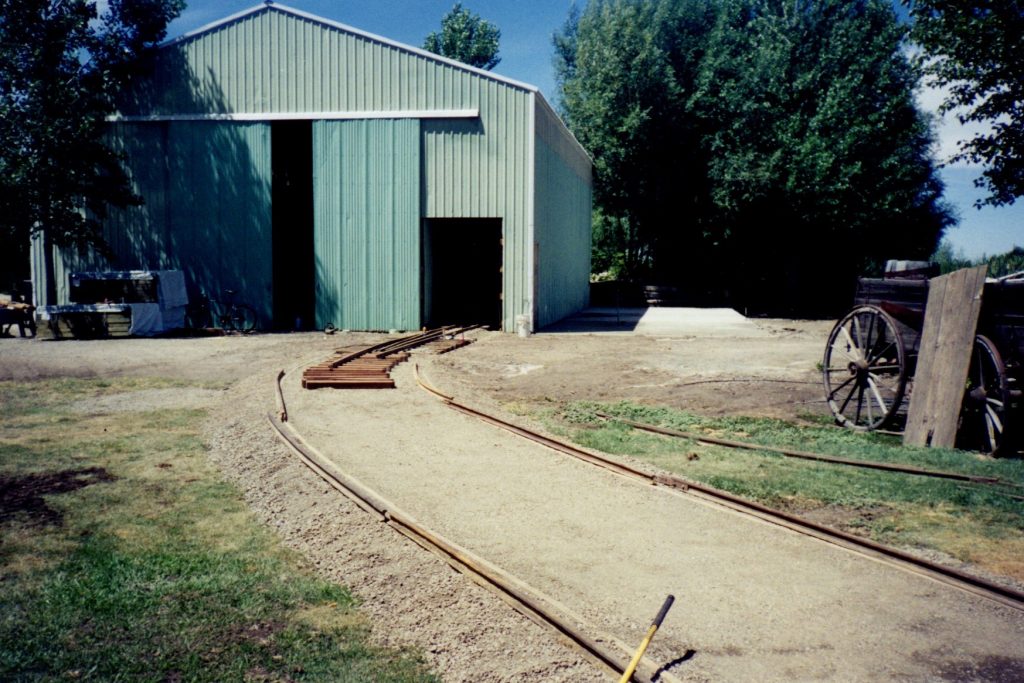

Right outside the barn was the main driveway entering the property. The first project was to build a crossing that could support heavy equipment crossing the tracks. In the photo at the right you can see that in this section full sized railroad ties were used under the tracks.


A short railroad tunnel was then built leading out of the barn toward the crossing. The track then made a long, slow “S” turn to the location where a switch for a siding would later be installed.

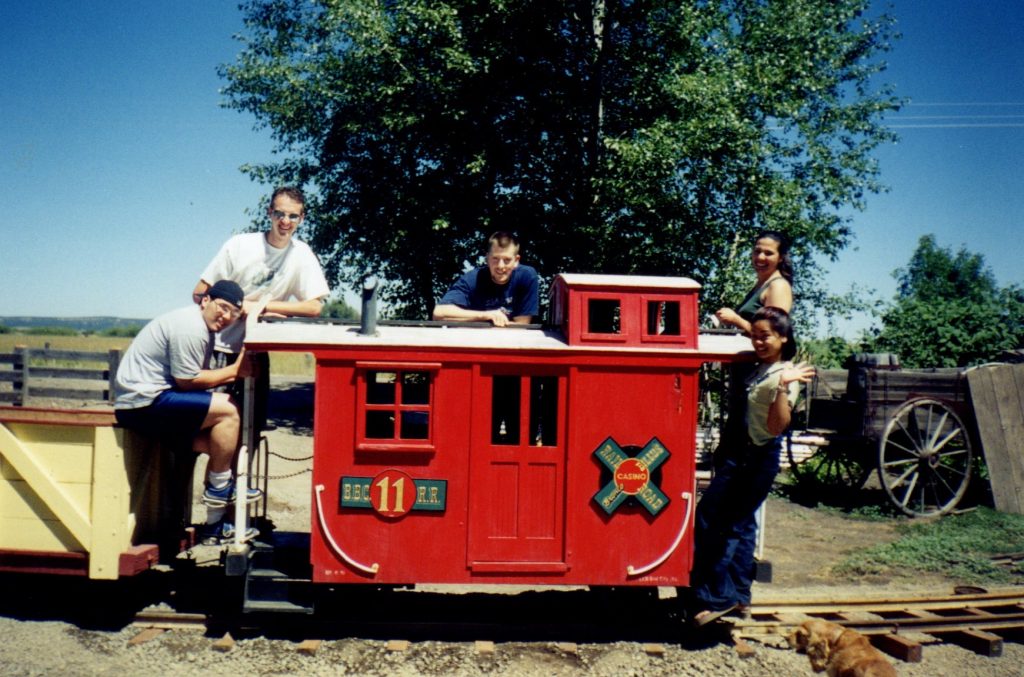
Our son Will came home for a visit in early June with four of his friends after the five of them had just graduated from the University of San Francisco. They had the opportunity to drive some of the first spikes in our five year railroad project.
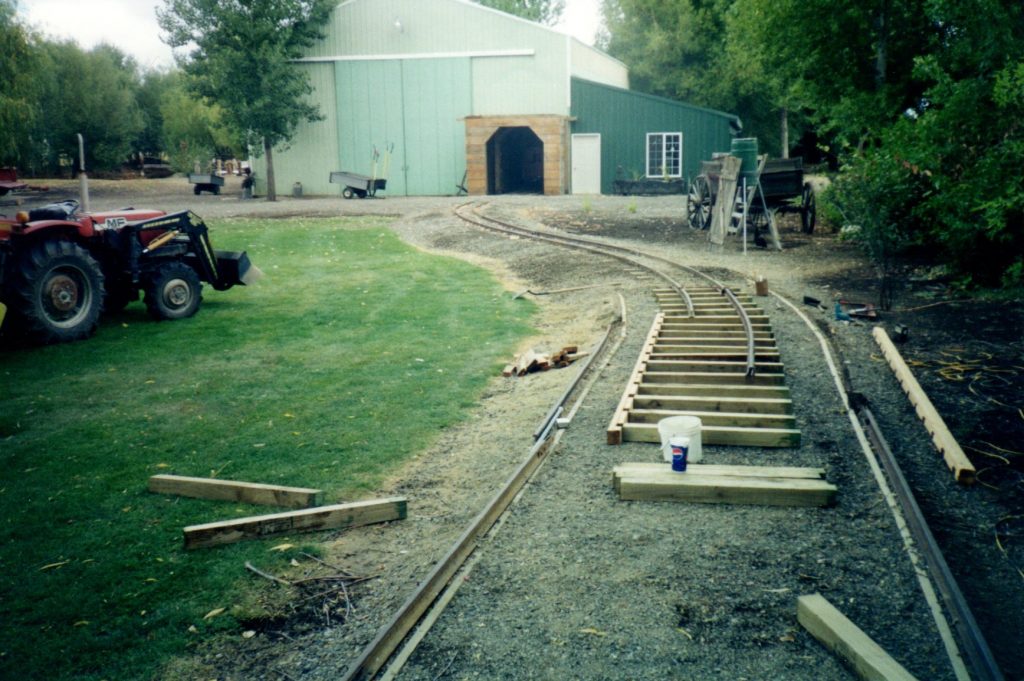

This first 300′ of track took a long time for Stephen to build, because he was experimenting with different methods of building the roadbed and laying the rail. The method he developed will be explained in detail later on this web page.

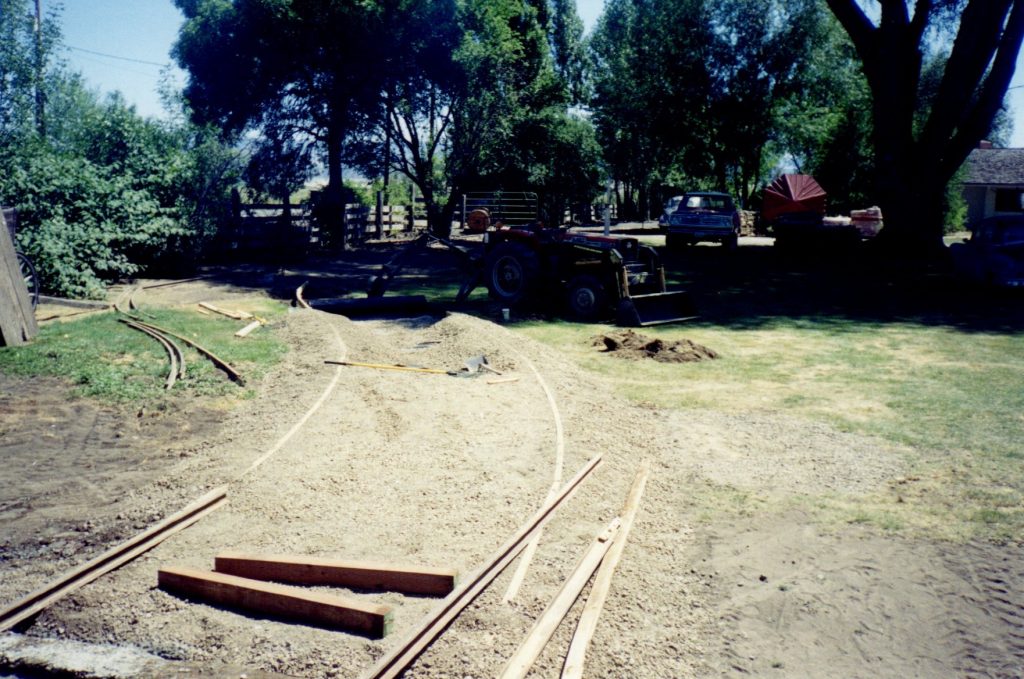
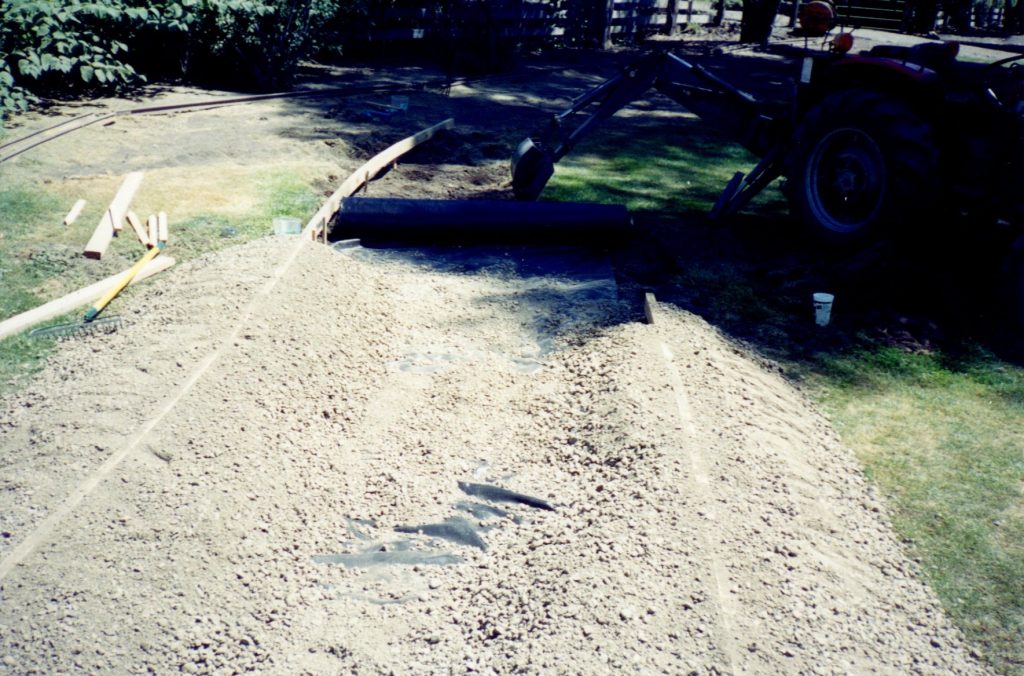
In these photos Stephen is removing the lawn sod as the track makes its way through the yard.
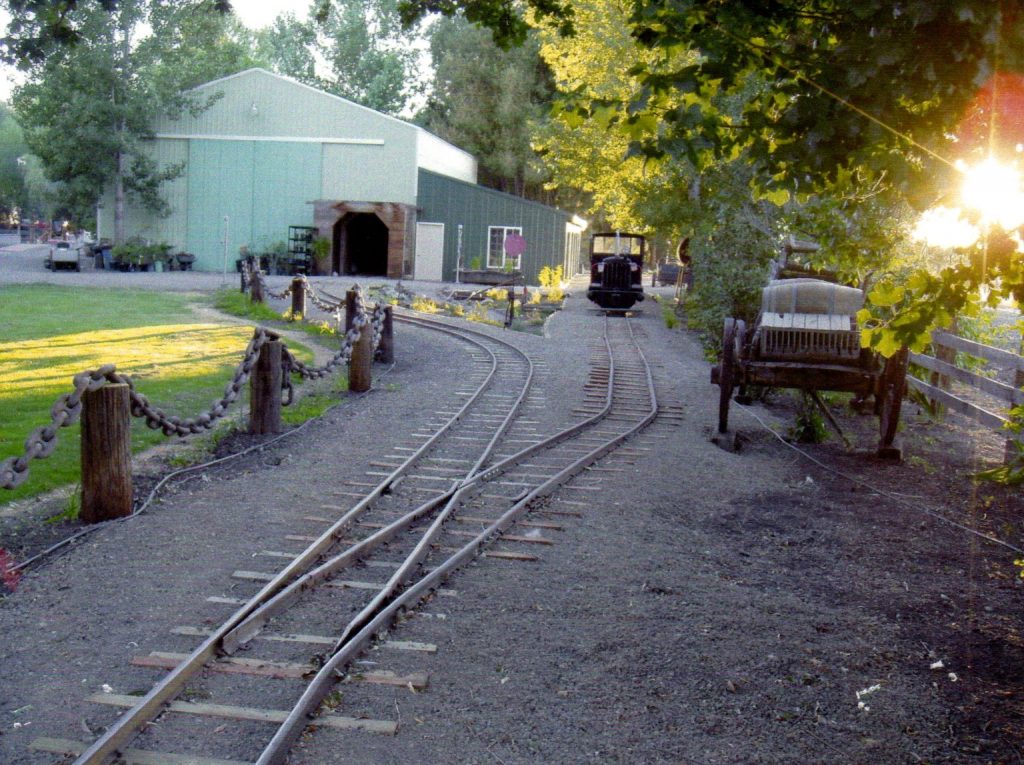
After making the turn in the yard, a switch was added to the track with a siding so Stephen would have an area to load and unload train cars and also for storing extra rolling stock. Small ore car mining rail was used on the siding.
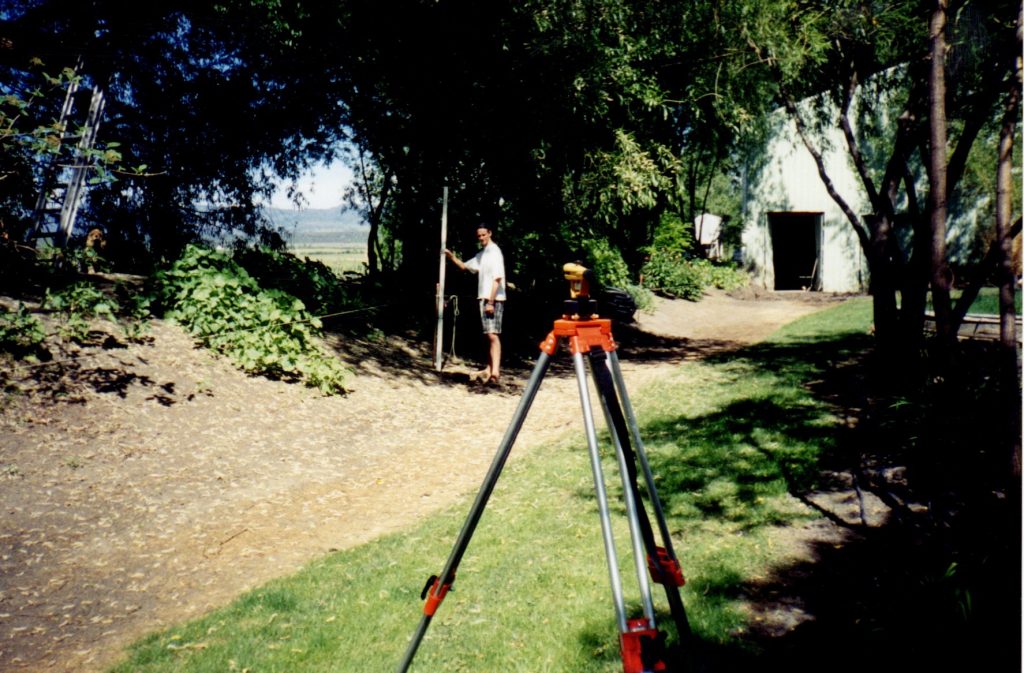
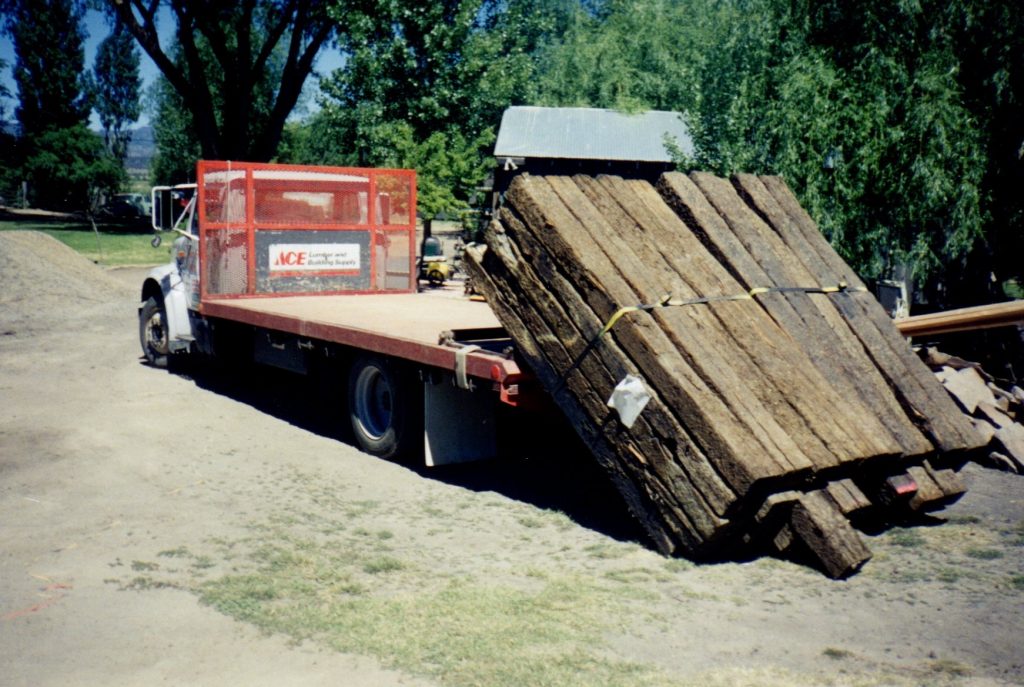
After finishing the 300′ section of track in front of the barn, Will volunteered to help his dad tackle the section that ran from the rear of the metal barn, along the north side of the large pond, to the area where a train tunnel would be built through a large bank leading to the lower field. They surveyed, excavated, and built a retaining wall along where the track would be laid.

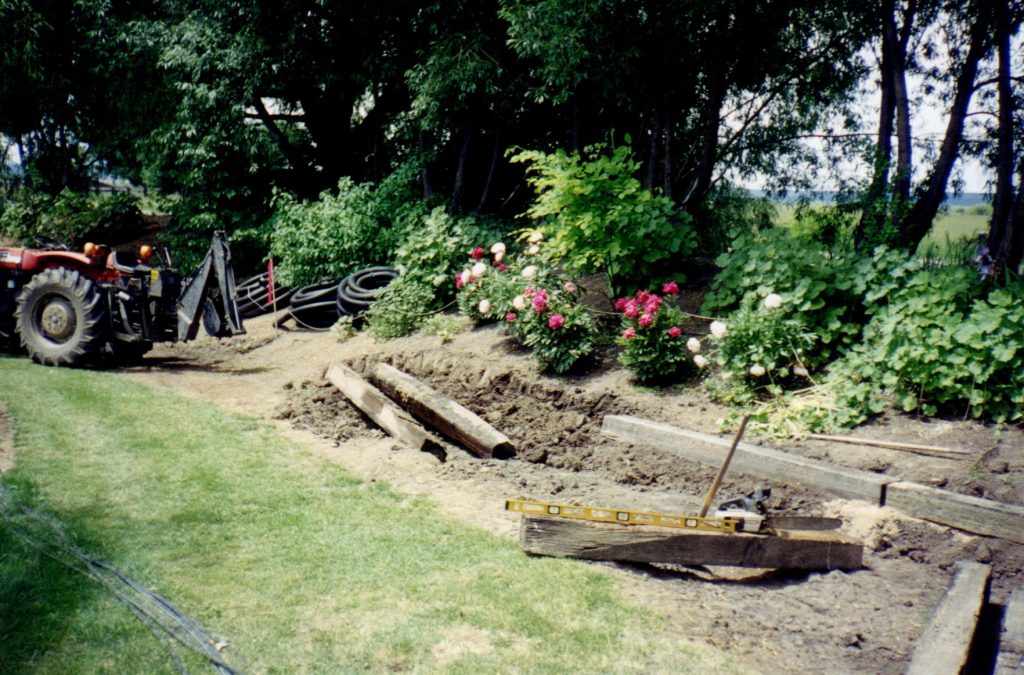
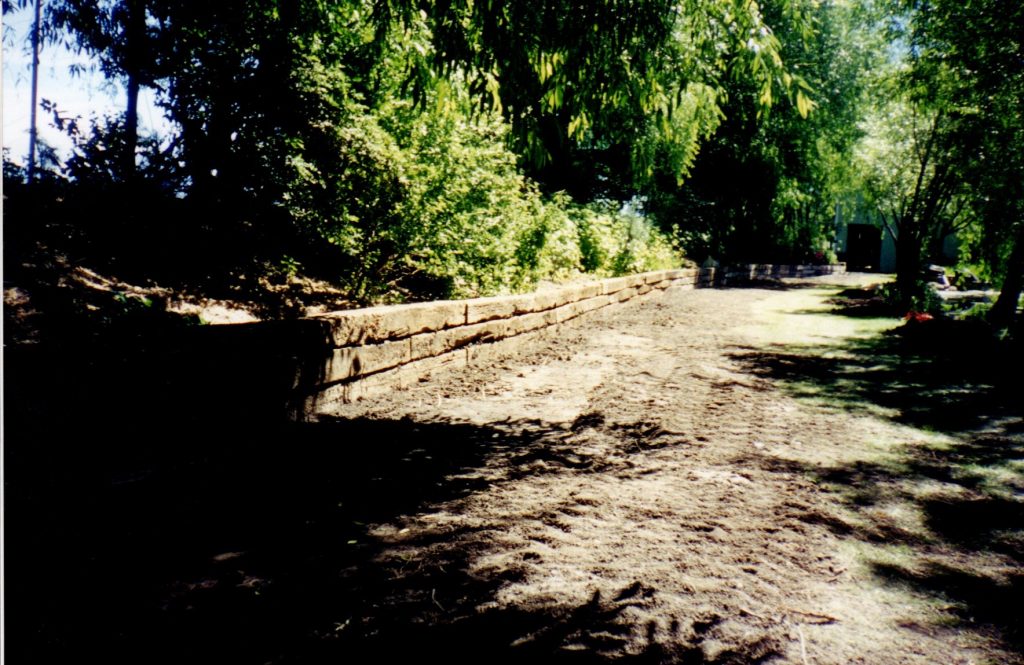
In this photo the retaining along the north bank has been completed.

For the next five years this truck would become very familiar in our gardens as hundreds of tons of #2 road base was hauled onto the property to build the roadbed for the railroad ties and rails.

Stephen made the decision that the first summer he would concentrate only on building the roadbed. He would wait until the summer of 2000 to start laying rail.
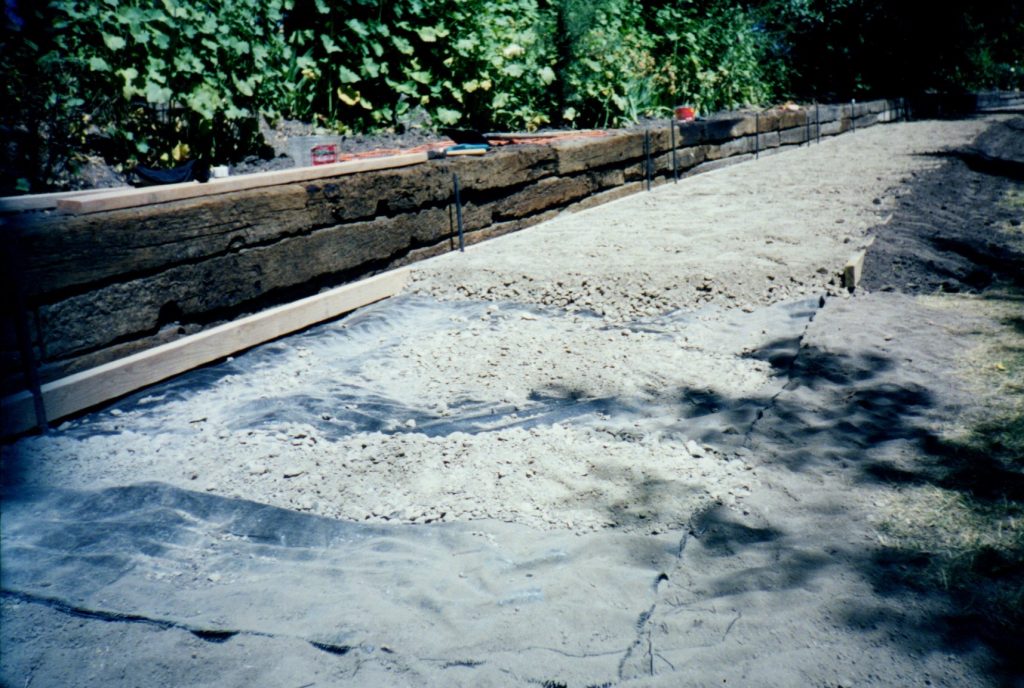
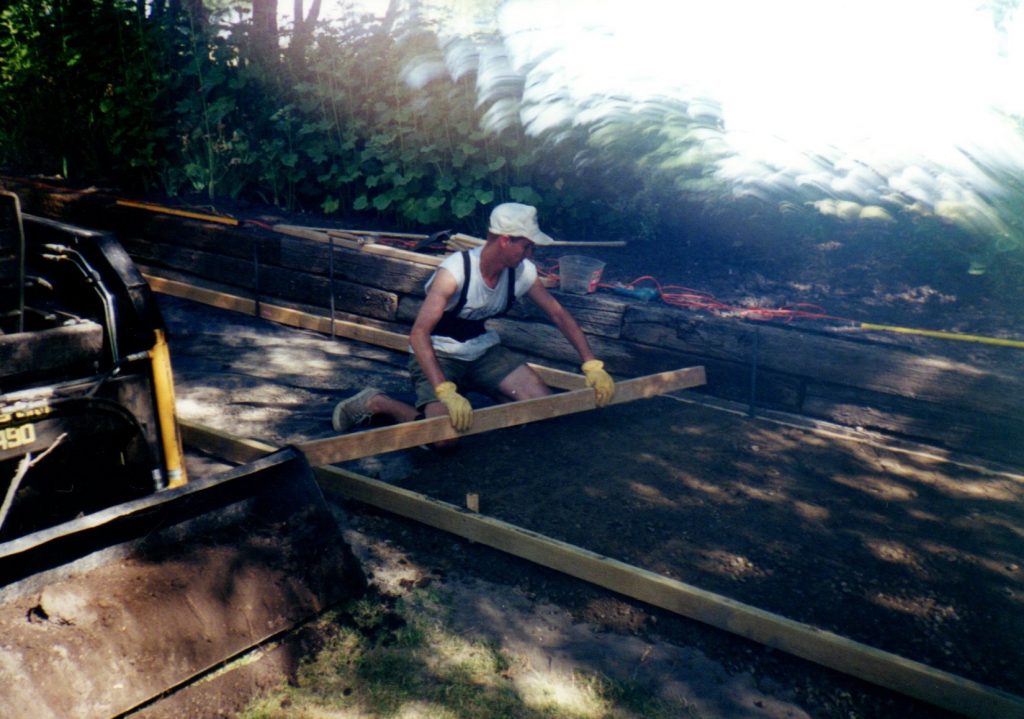
After a section of road bed had been prepared, it was outlined in pressure treated 2 x 4s, which were leveled from side to side. Where necessary, the 2 x 4s were held level with wooden stakes. The roadbed could climb and descend gentle slopes, but it had to be level from side to side.
The next step was to roll out a 6′ wide section of road fabric, the same material used under highways by CalTrans. This material helps prevent roots from growing through the roadbed. Then Class II (#2) road base was dumped in the area with Stephen’s front end loader. This road base is compacts easily and is a mixture of different sizes of crushed rock and dirt. The last step is to hand level the road base.
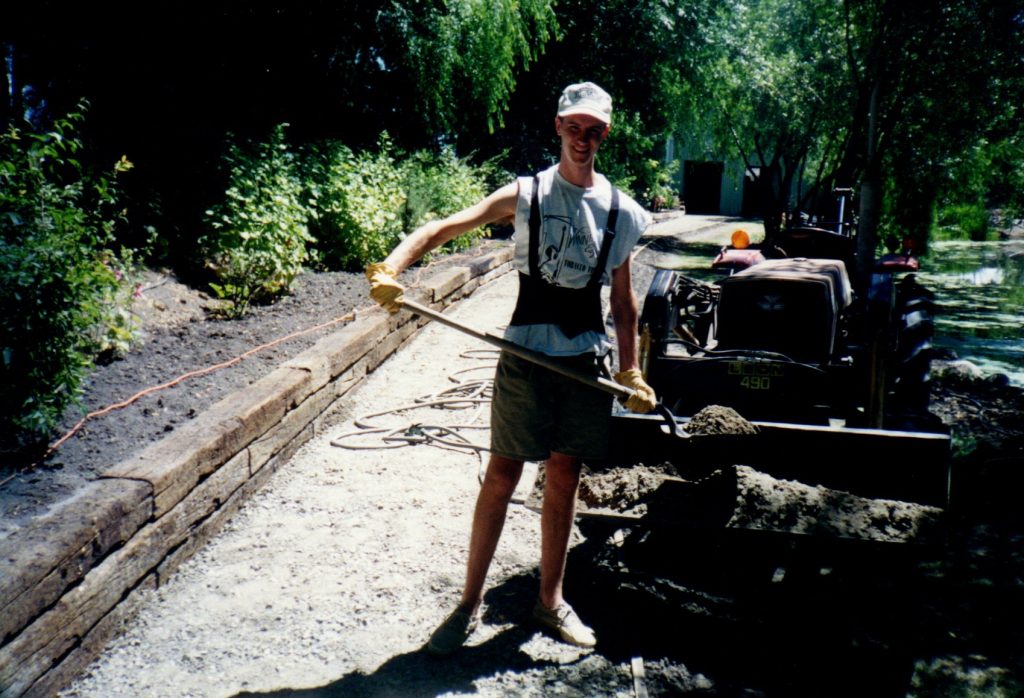
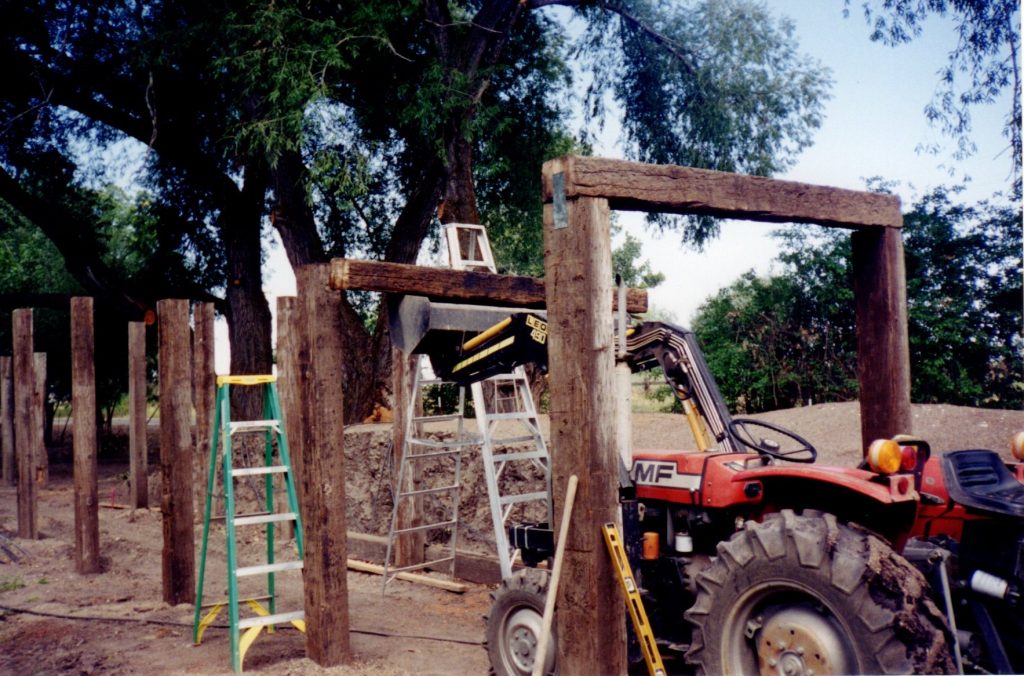
By the end of June, the railroad track was approaching the location where Stephen would need to build a railroad tunnel. Will hand shoveled road base to finish the edge of the roadbed, while Stephen started digging through the bank where the railroad tunnel would lead to the lower field.
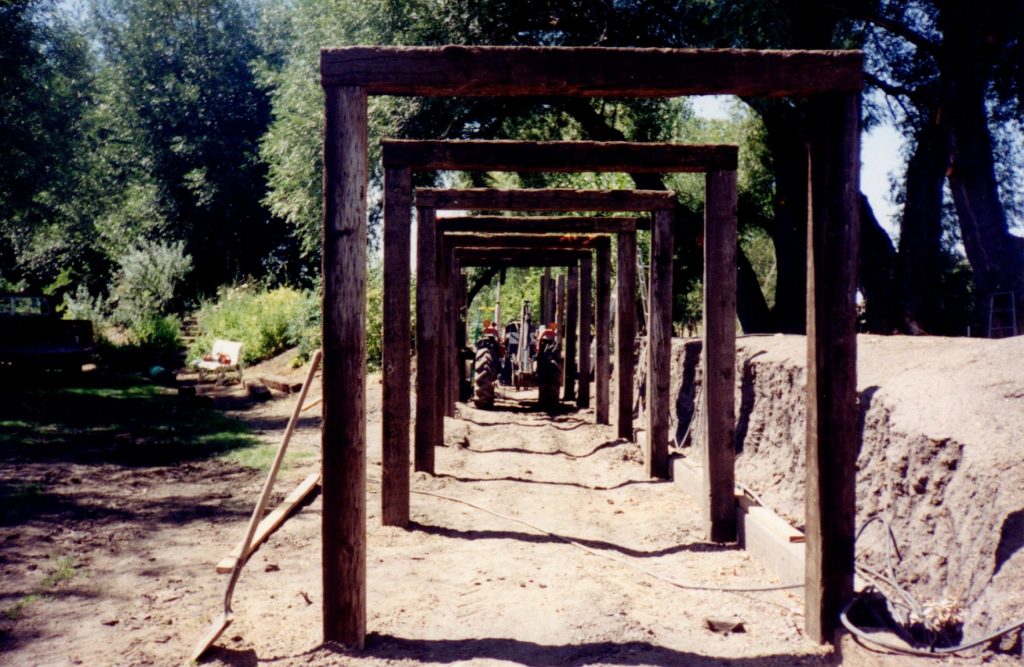

The 82′ railroad tunnel connects the large pond area with the lower field where the ghost town of High Grade is located. After installing the main support posts, Stephen next built the train roadbed through the support posts, and then the walls and roof of the tunnel were completed the following year.
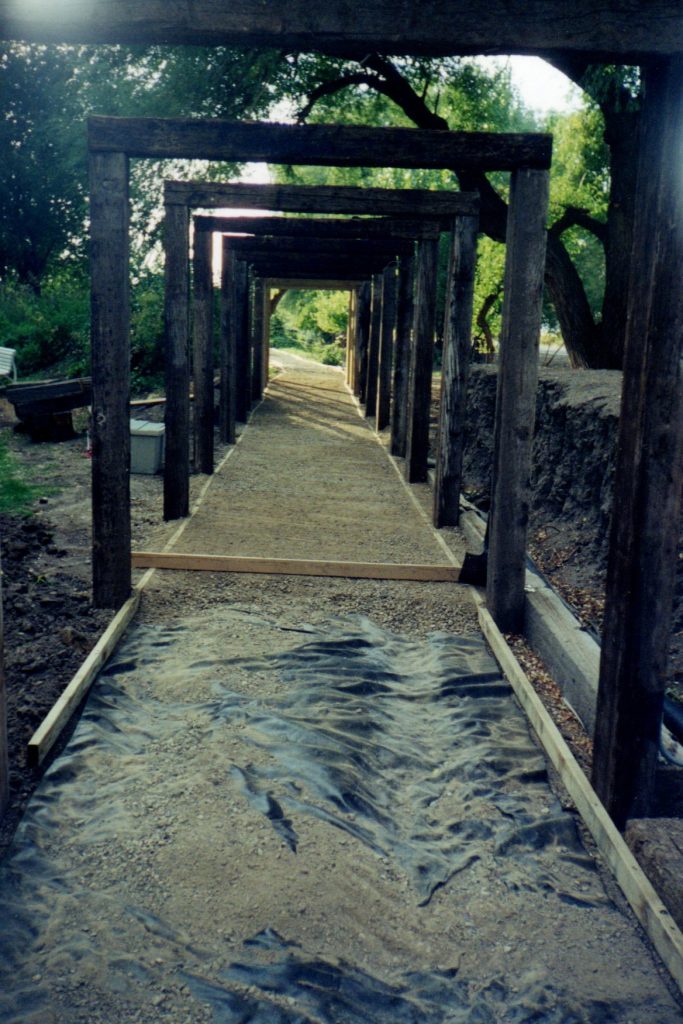
When the framework for the tunnel was completed, the road bed was installed through the tunnel supports.

In the photo above, before the road fabric could be rolled out, all the sod in the right of way had to be removed to prevent settling of the roadbed. In the photo below, Will levels the road base on the same section of road fabric shown above.
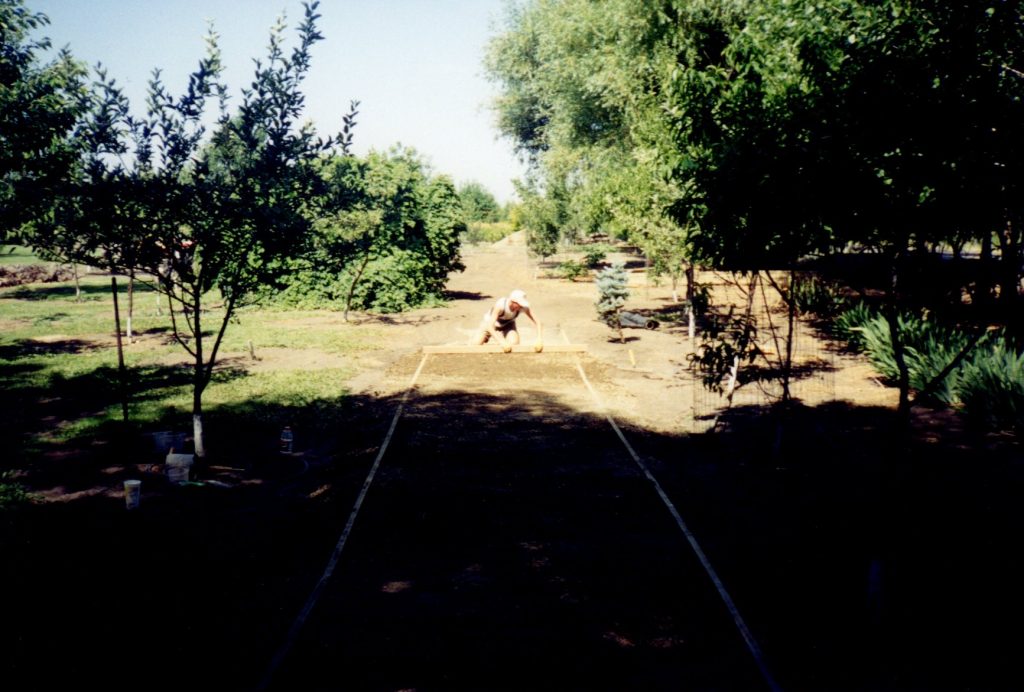
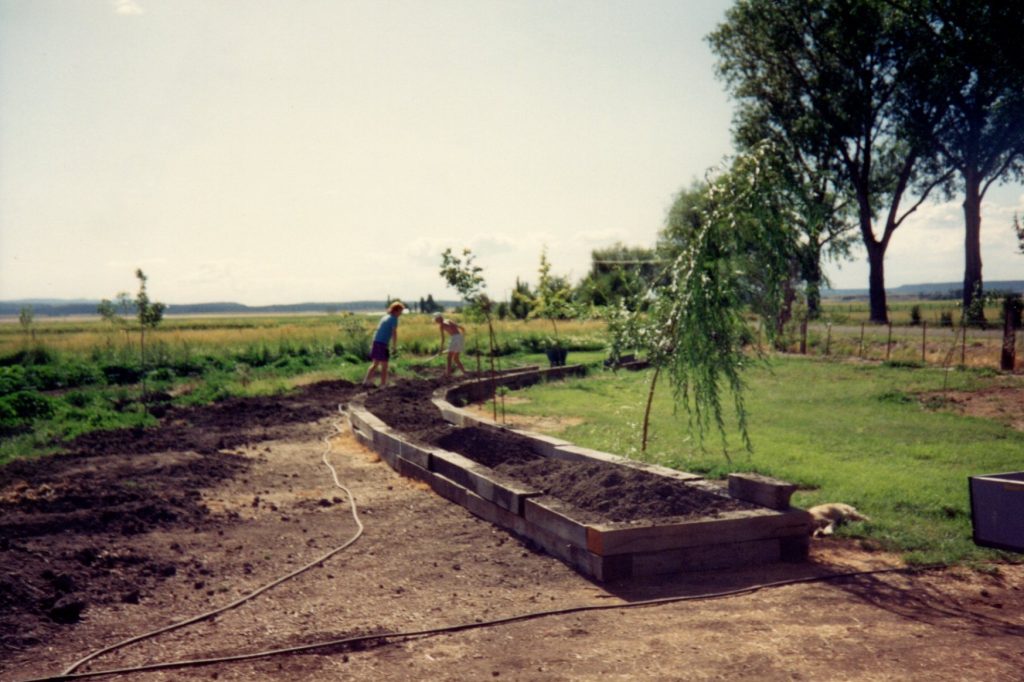
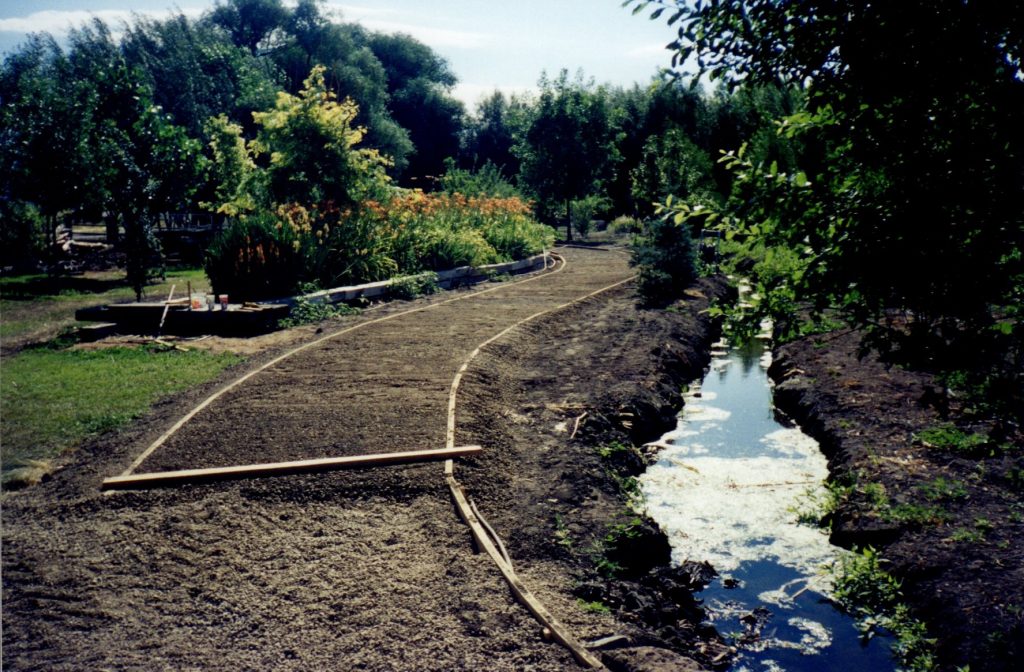
These two photos show the same location on our property taken nine years apart. In the photo on the left our sons Joshua and Will are earning some summer money when they were still in high school. They are building a planter box in the lower field for their dad. In the photo on the right, the new roadbed for the train curves around the same planter box nine years later. You can see that our landscaping is starting to mature.
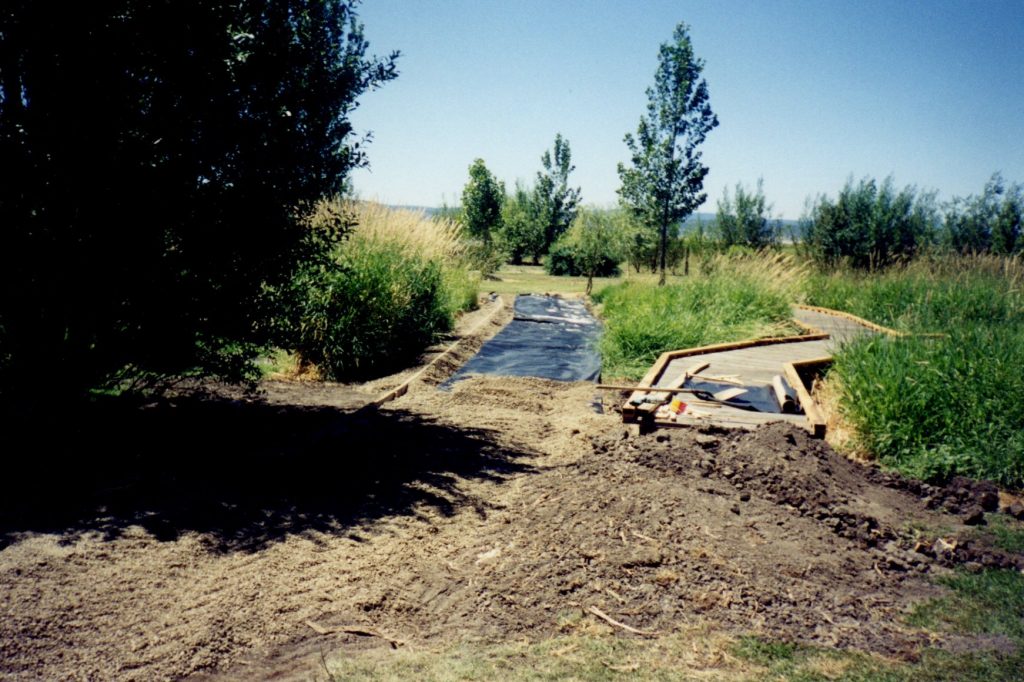
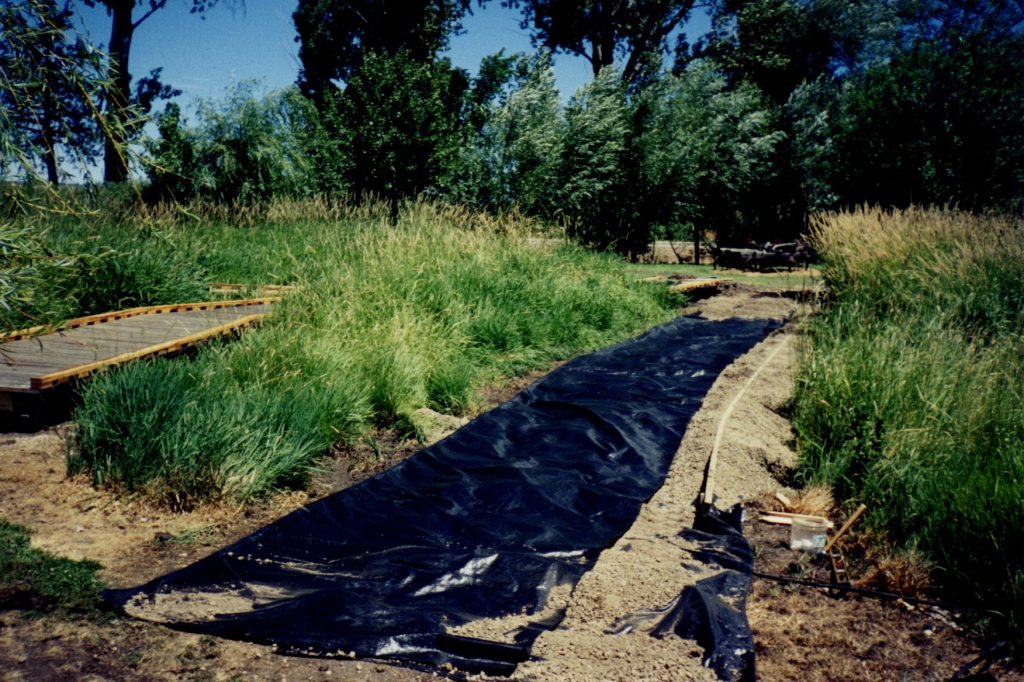
Crossing the marsh in the lower field required a huge amount of road base to keep the roadbed level. After the installation of culverts, road fabric was laid down on the area where the sod had been removed. The first layer of road fabric can be seen at the lower right in the photo above. After adding over 12″ of road base, a second layer of road fabric was added. This in turn was covered with road base and leveled.
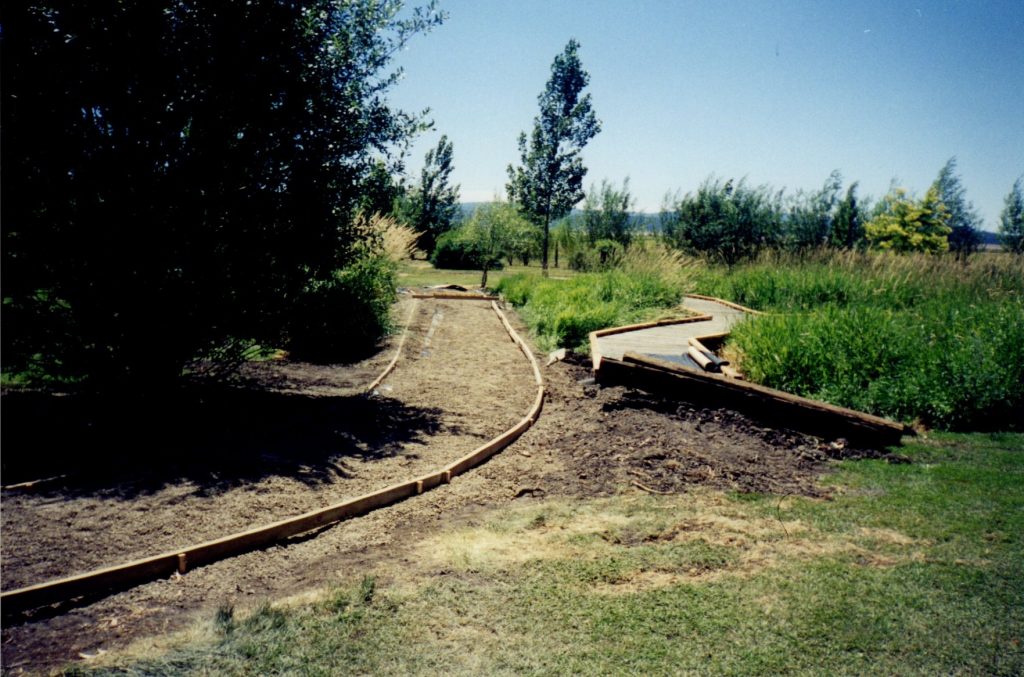
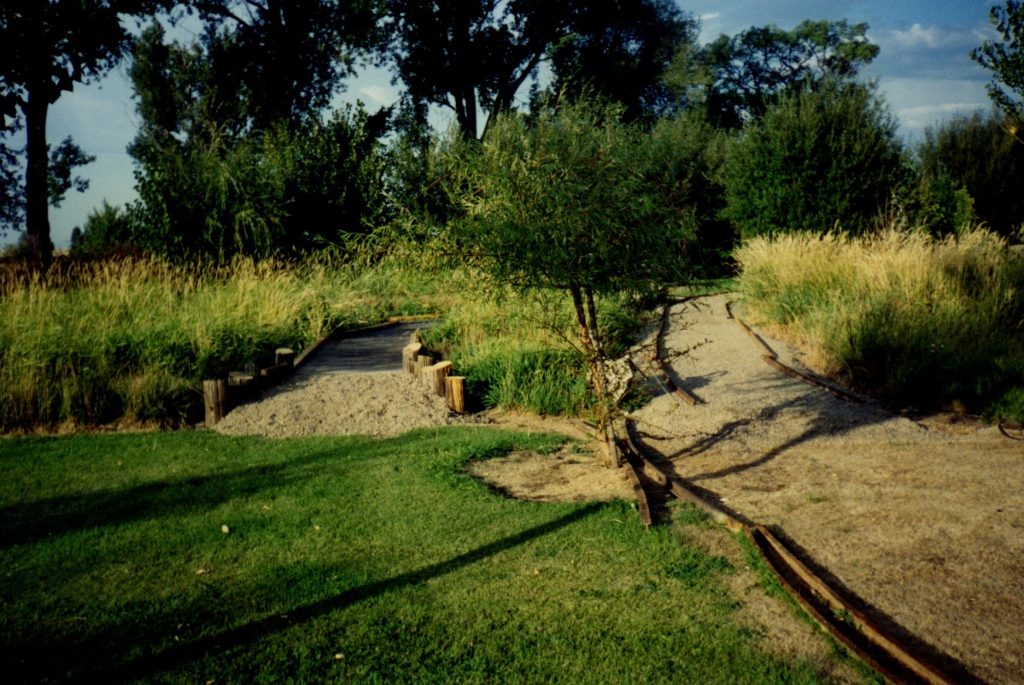
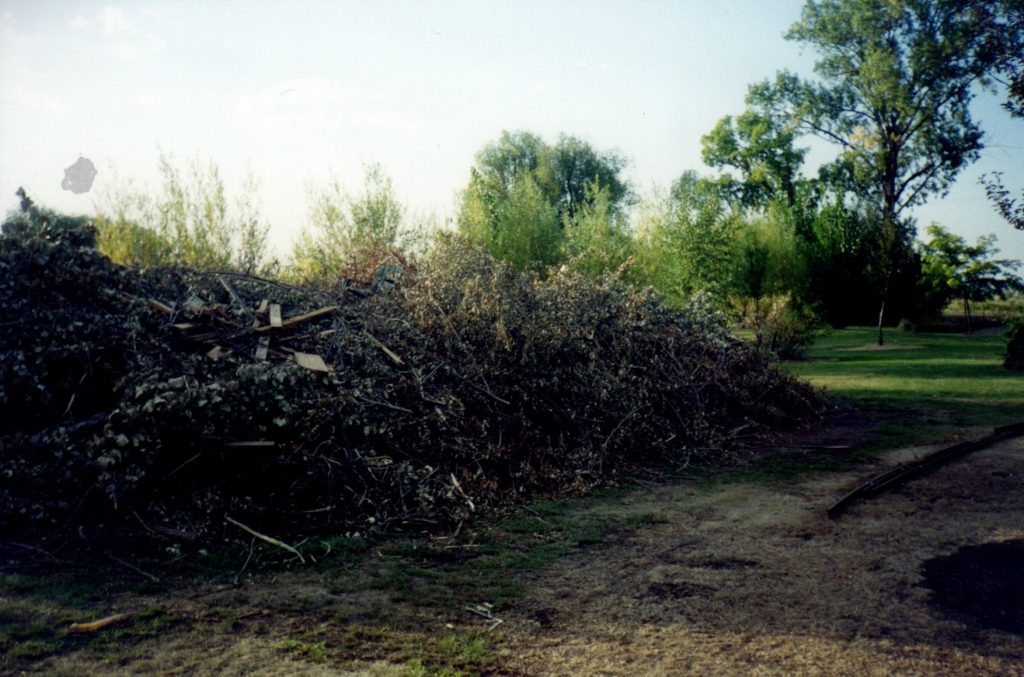
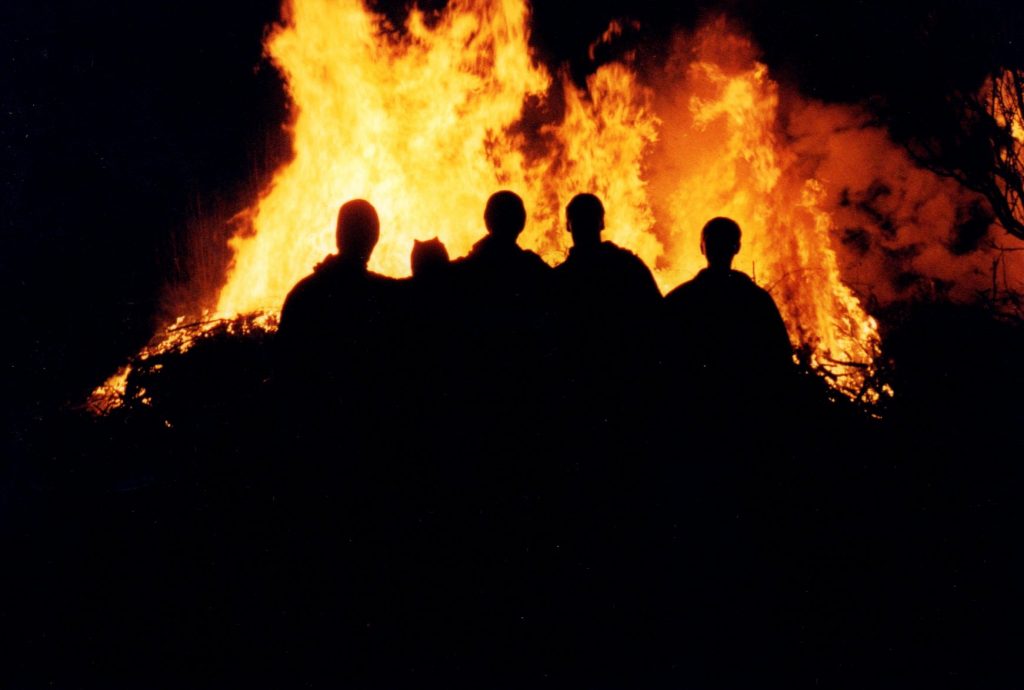
When construction reached the lower end of the property, the roadbed passed by the large pile of branches that were stacked ready to burn during the winter months. The large pile resulted from a windstorm that destroyed portions of some 100 year old trees on the property. We waited until New Year’s Eve to burn the pile when there was snow on the ground. We had notified the sheriff’s department that we were burning the pile. Our son Will and four of his friends helped turn the event into a celebration. Then something funny happened. Since this was New Year’s Eve, when the new year brought in the year 2000, there was a large police presence everywhere in California because of the problems anticipated from the calendar switching over into a new century. It was thought that computer systems might crash causing chaos in businesses, traffic lights, police 911 call centers, etc. The large number of police on duty even took place in our sleepy area of the state. As the flames reached their peak, suddenly police cars started rolling onto the property, including California Highway Patrol, Modoc County Sheriff’s department, and several units from other enforcement agencies. When they pulled up Stephen went over to explain what was going on and that everything was under control. The officers just laughed and said there were so many police on duty, they just wanted something to do, and they saw the flames and headed out to see what was happening. It was quite funny and everyone enjoyed the show.
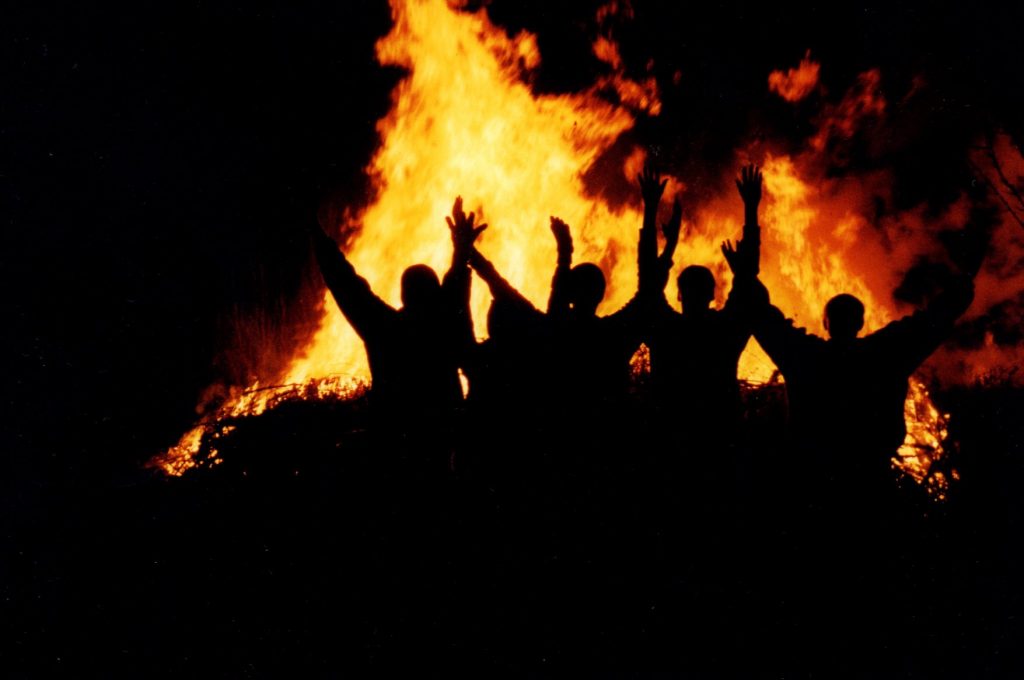
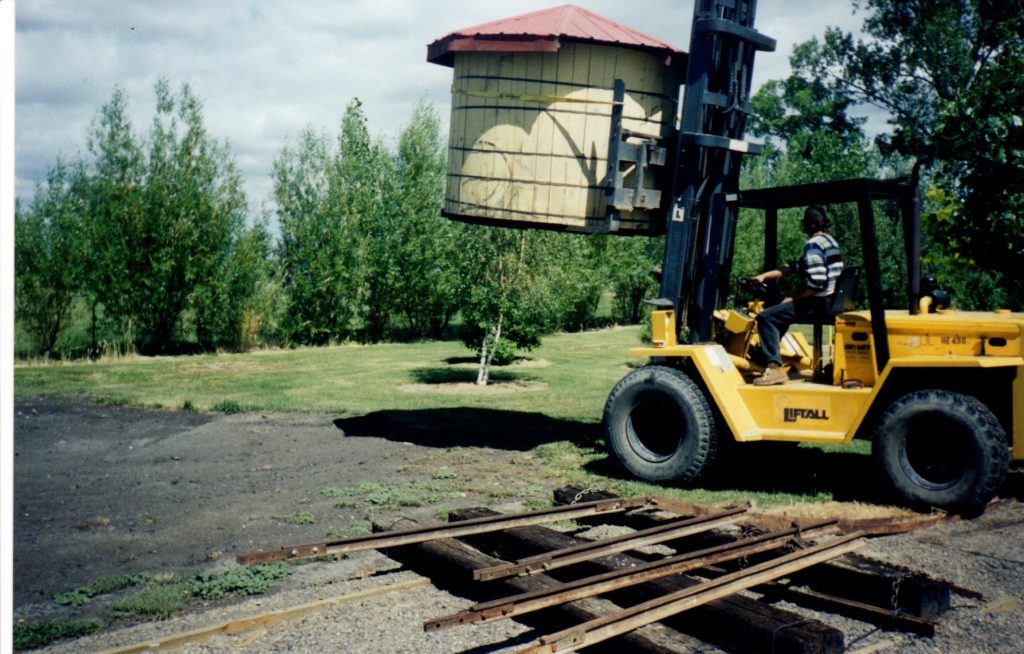
This photo shows the top of the water tower that had been stored since arriving from Colorado being hauled to its permanent location near where the cemetery would soon be built. You can see the ashes left from where the burn pile had been.
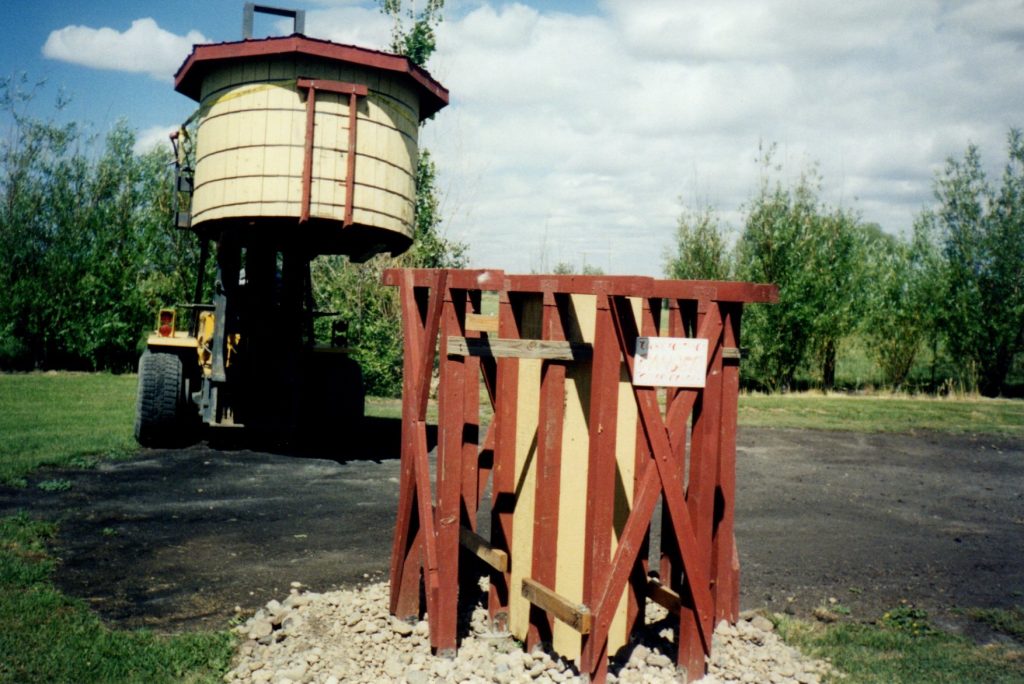
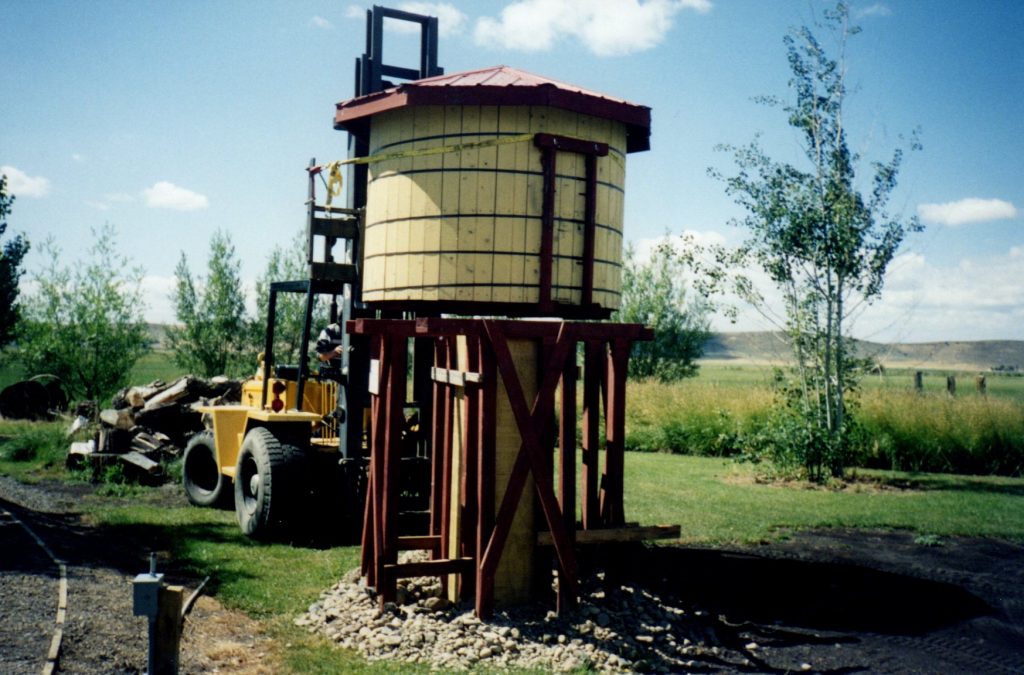
Stephen poured concrete footings for the base of the water tower and bolted the base to the footings after the concrete cured. The water tank was then lifted onto of the base and bolted down.
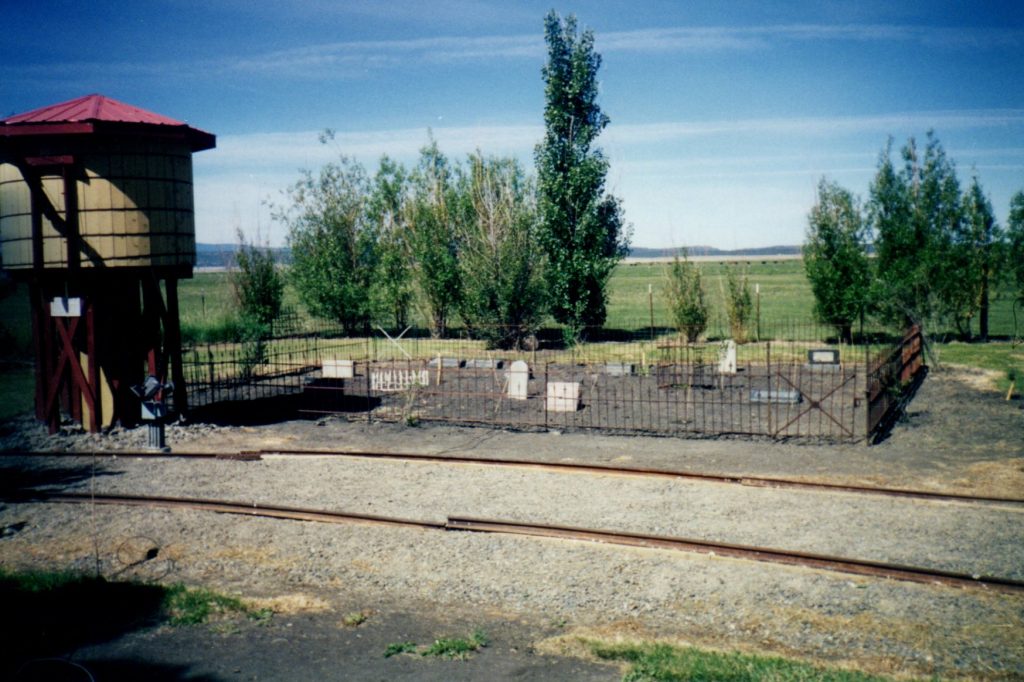
Here the tower is installed and the cemetery has been completed. The railroad rails have been put in place along the completed roadbed. As the roadbed progressed around the lower field during the summer, the railroad rail was hauled and placed along the right-of-way in order to get it out of our yard where it had been stored since arriving in April.
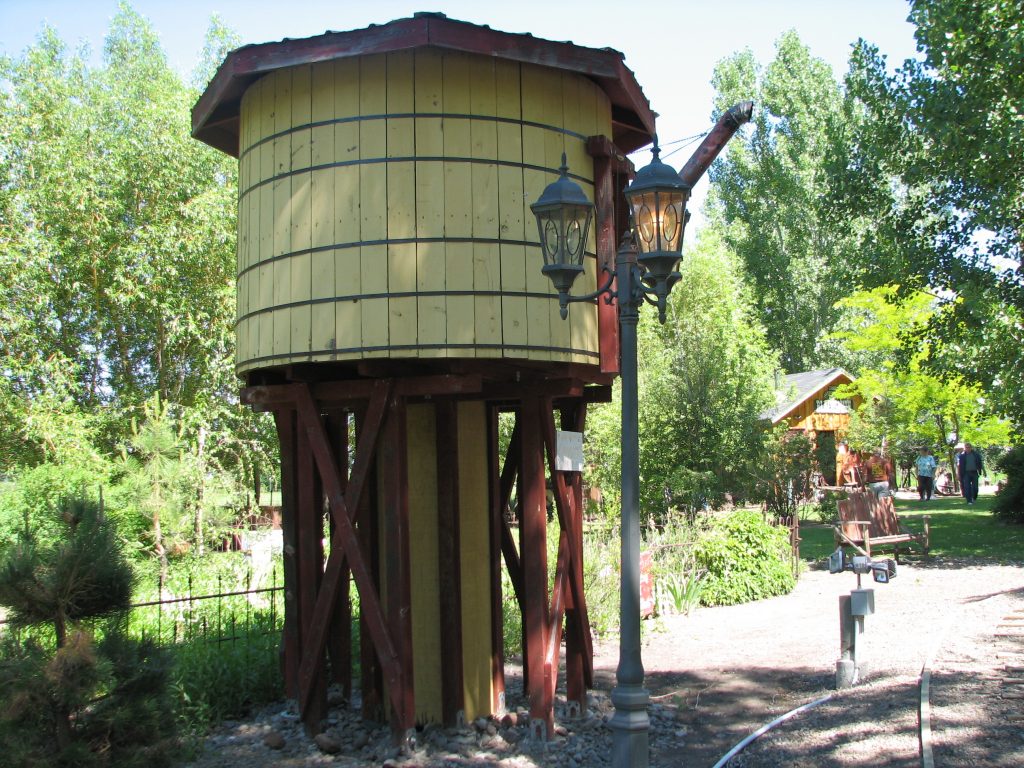
Above is another photo showing the water tower in place, and the light fixtures that run along the track have been installed.


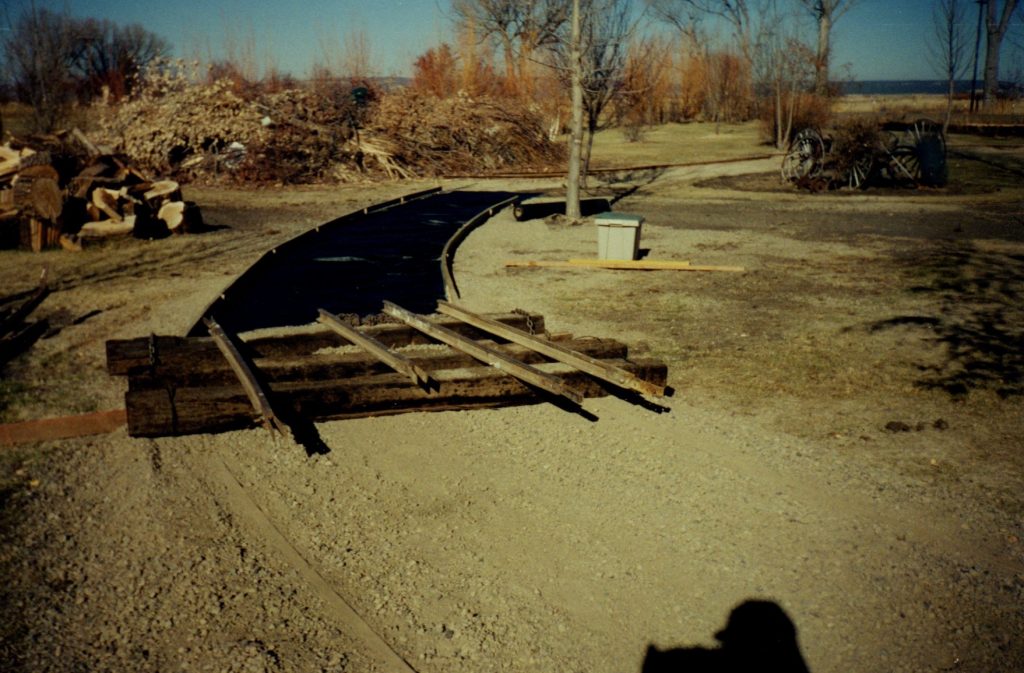
Because hand leveling the road base was so labor intensive and exhausting, Stephen created a “drag” shown in the above photo. It was made up of three sections of railroad rail, followed by three full sized railroad ties chained together. It was then weighted down with four additional pieces of 20 pound rail. After the road base was dumped in the framework, Stephen hooked his tractor to the “drag” and used it to level out the road base. This saved an incredible amount of labor. It could only be used in areas where the roadbed was not a tight fit in the existing landscaping.
In the right hand photo, the roadbed curves around the lower end of the property. The large tree limb pile in the background was burned, and the cemetery was installed in that location.
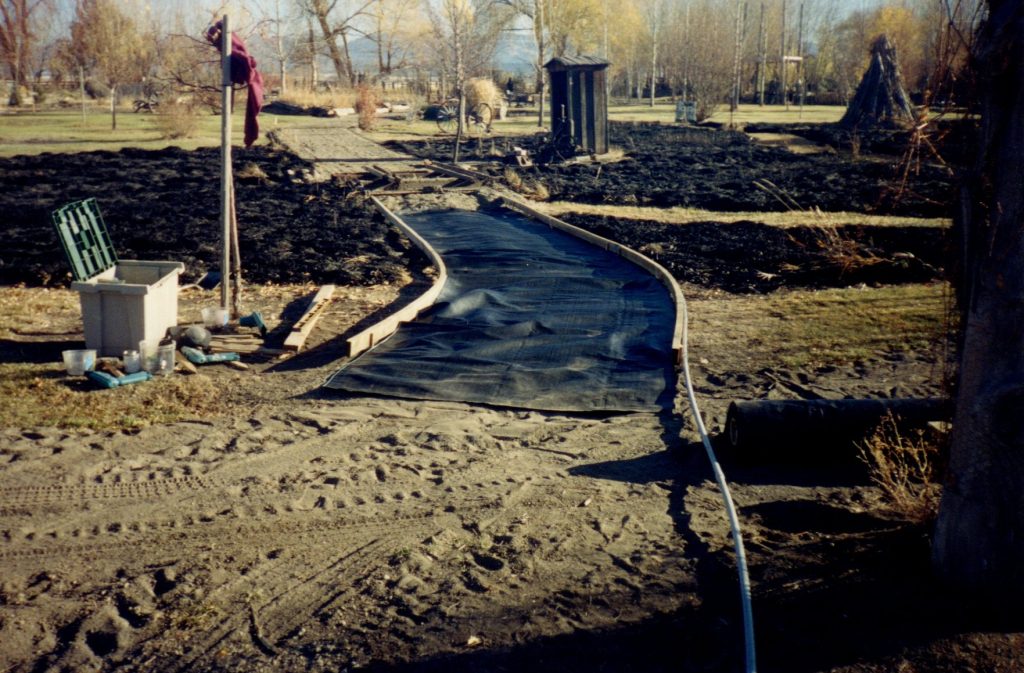

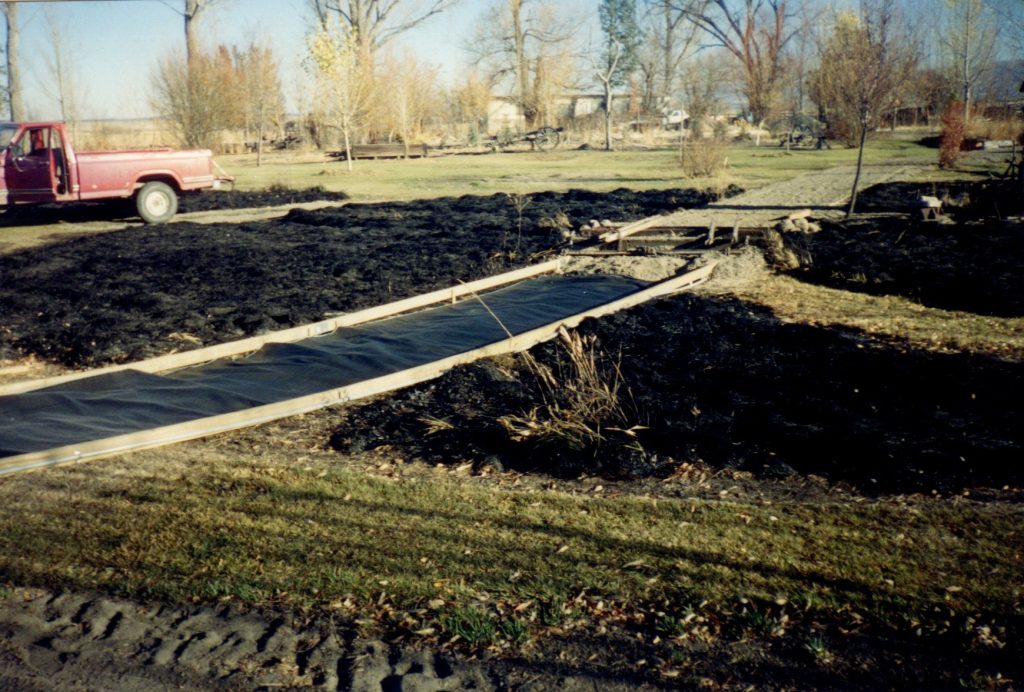
By early August of 1999 the roadbed had completed the turn at the lower end of the field and starts crossing the second marsh, which has been burned off to make construction easier.

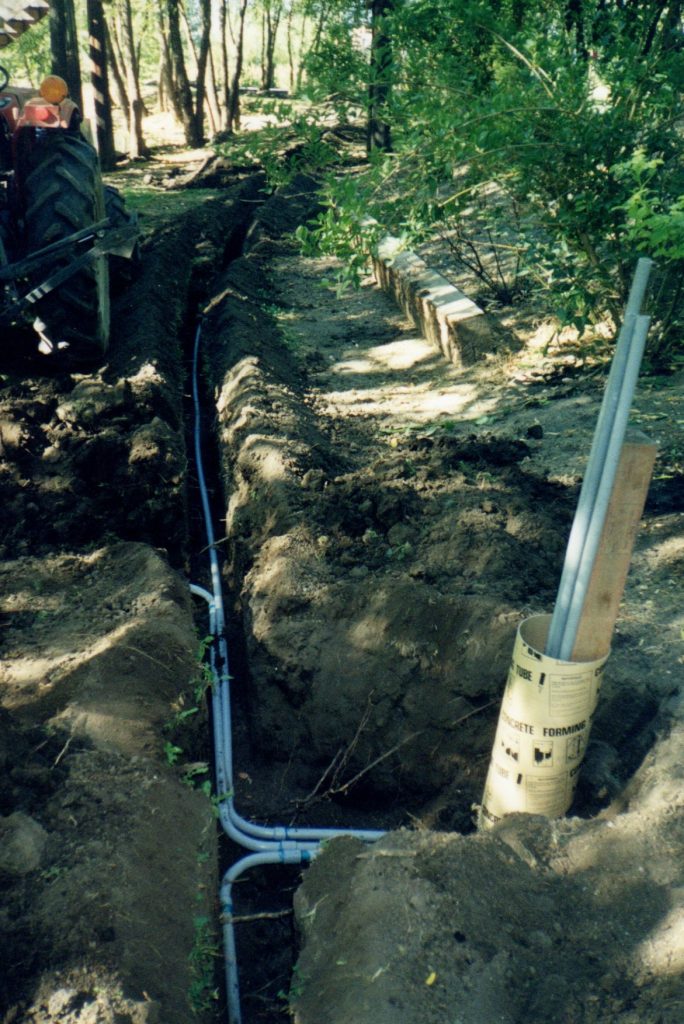
Underground conduit for electrical lines was installed under the railroad right-of-way. Every 100′, as the track was installed around the property, the lines were brought to the surface and electrical plugs and a lamp post were installed. After the project was finished in 2004, Stephen could flip seven switches in the barn and the entire railroad track would light up at night.

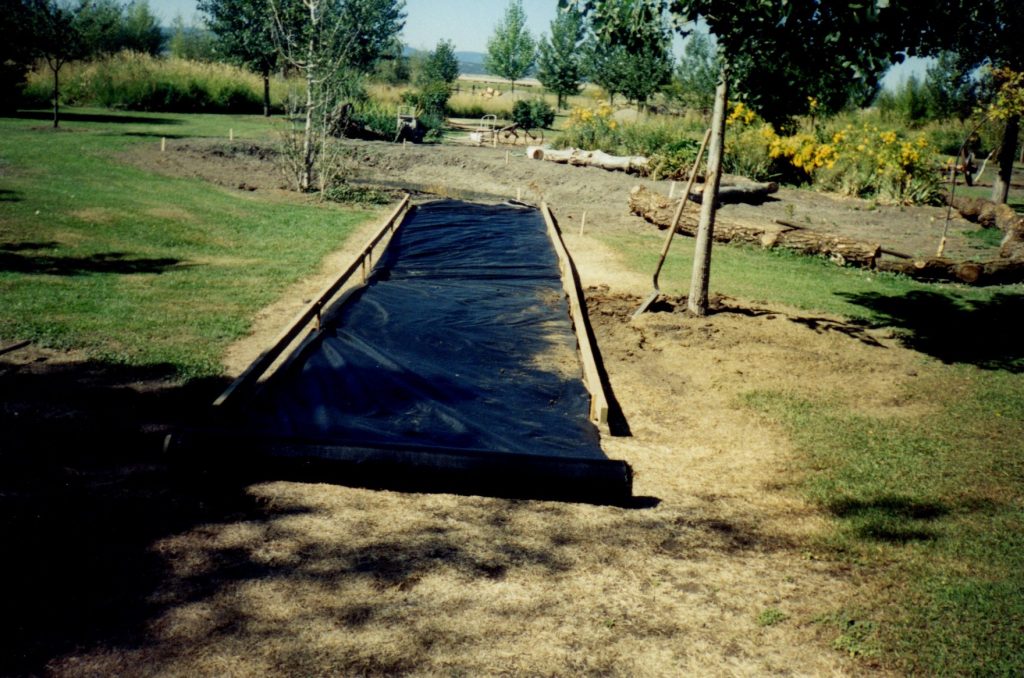
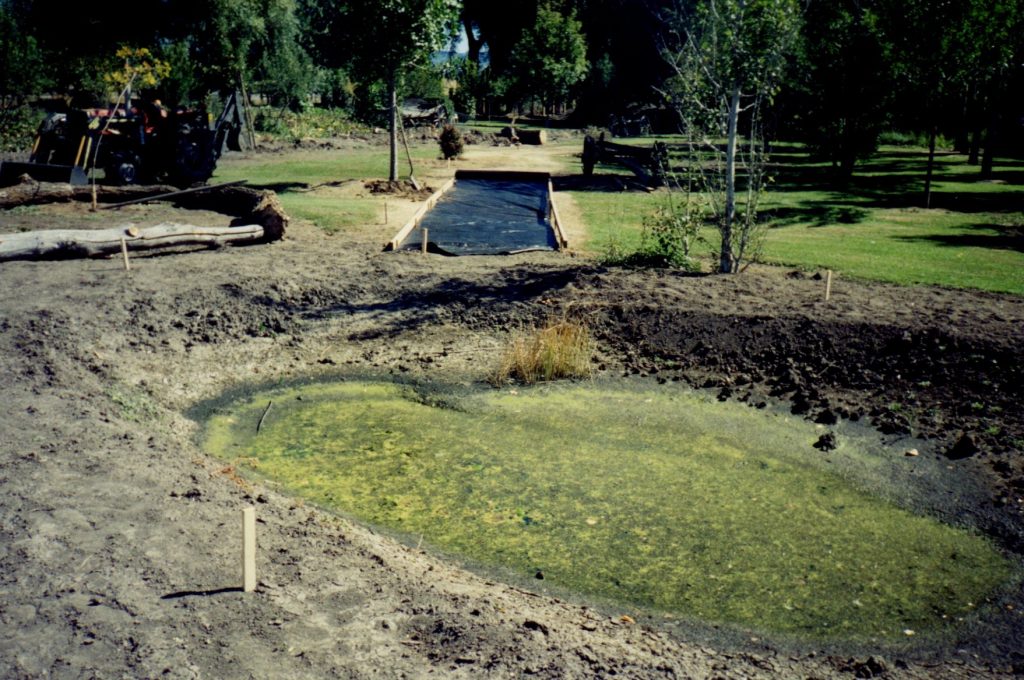
In this series of photographs, the roadbed approaches what eventually became the Wedding Pond.
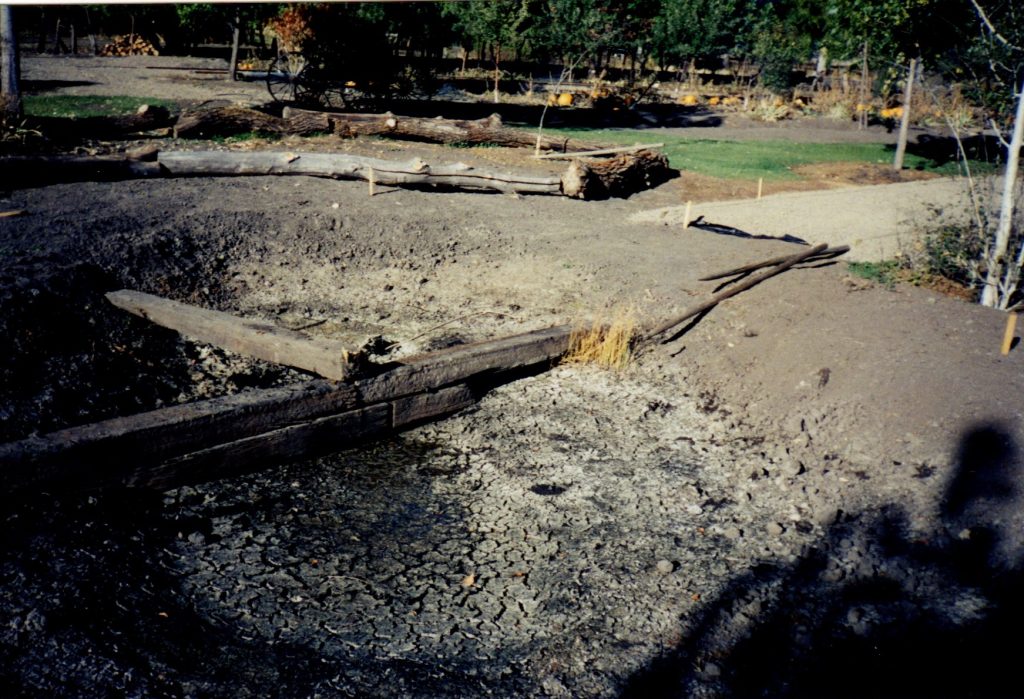

Originally the train was going to cross the pond area on a trestle, but Stephen decided the soil would be too soft to support a trestle. So a retaining wall was built, and the smaller section of the pond was filled with road base that could support the weight of the train. In the picture below you can see the same dry pond area after it was finished and is being filled with water the first time.

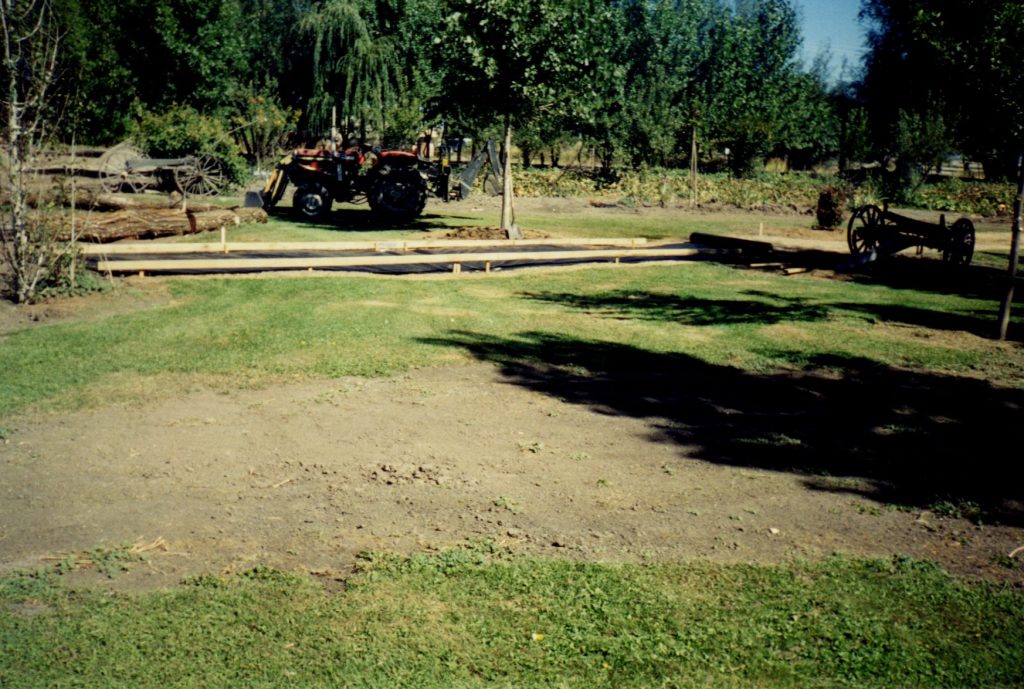
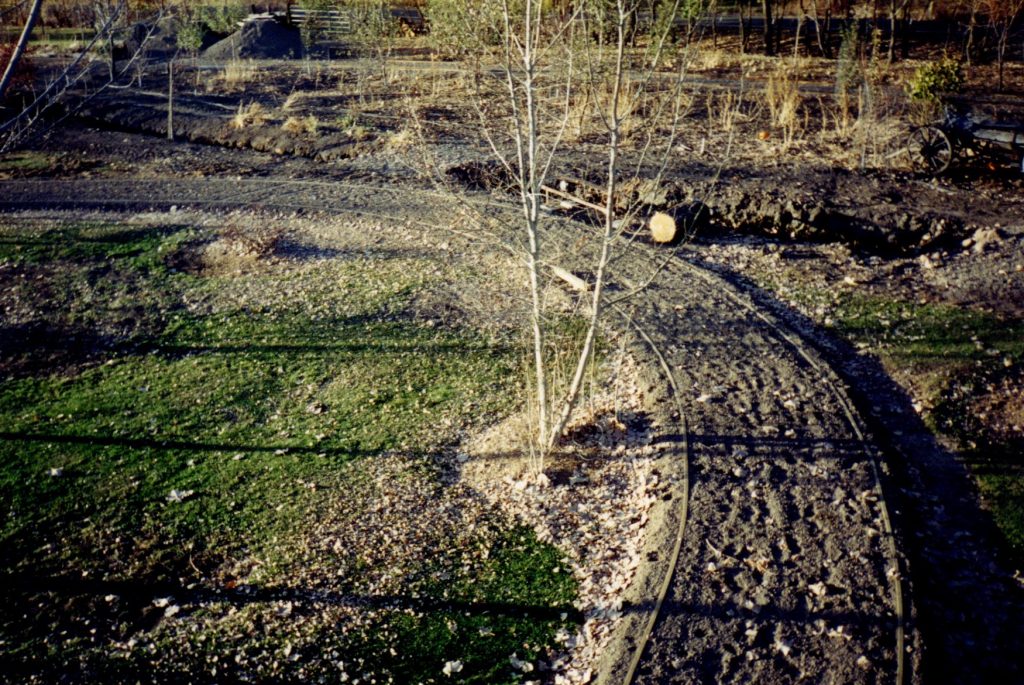
In the photo on the left you can see how the leveled 2 x 4s solved the problem of uneven ground. Once the road base was added and smoothed out, the roadbed would be level.
